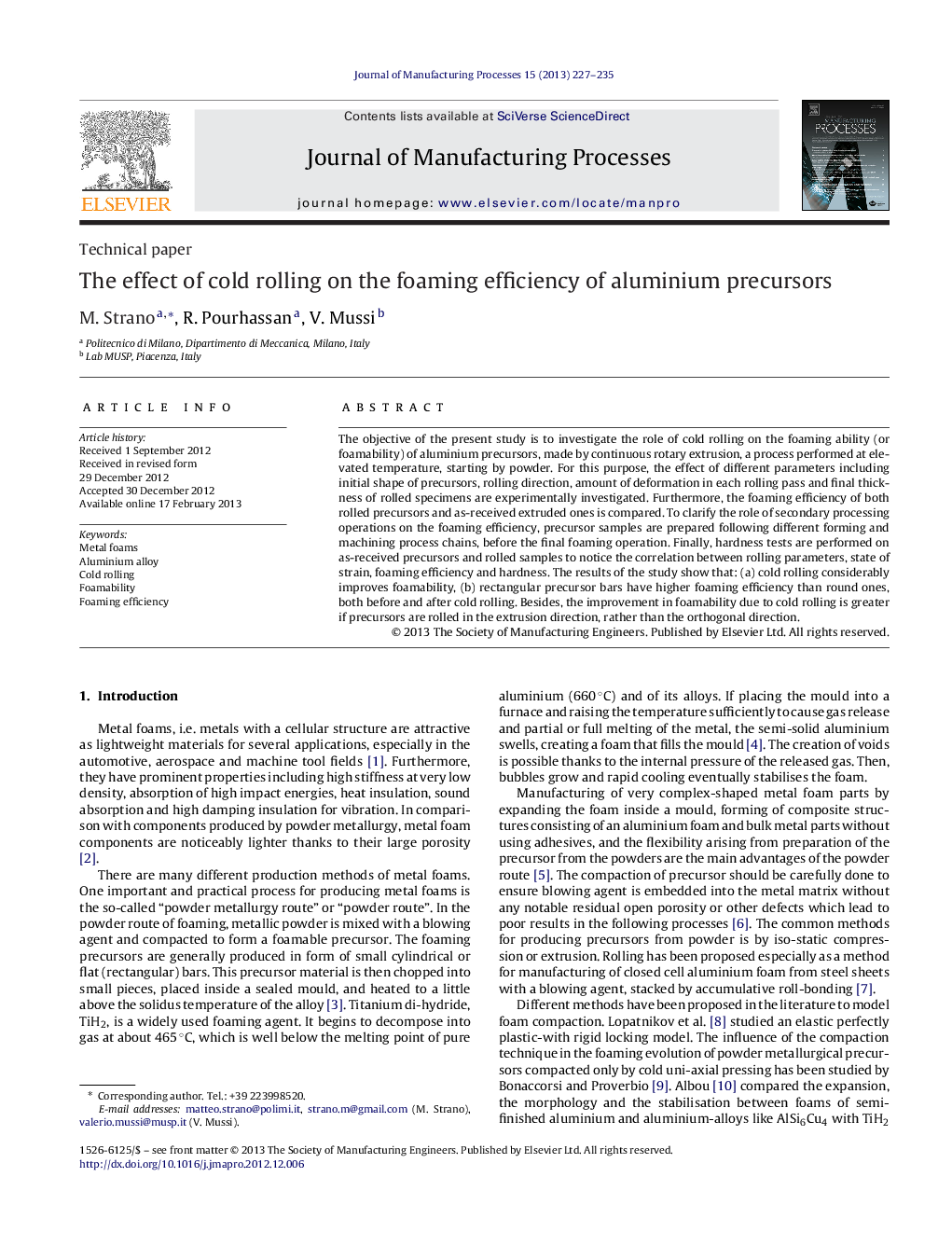| Article ID | Journal | Published Year | Pages | File Type |
|---|---|---|---|---|
| 1697084 | Journal of Manufacturing Processes | 2013 | 9 Pages |
The objective of the present study is to investigate the role of cold rolling on the foaming ability (or foamability) of aluminium precursors, made by continuous rotary extrusion, a process performed at elevated temperature, starting by powder. For this purpose, the effect of different parameters including initial shape of precursors, rolling direction, amount of deformation in each rolling pass and final thickness of rolled specimens are experimentally investigated. Furthermore, the foaming efficiency of both rolled precursors and as-received extruded ones is compared. To clarify the role of secondary processing operations on the foaming efficiency, precursor samples are prepared following different forming and machining process chains, before the final foaming operation. Finally, hardness tests are performed on as-received precursors and rolled samples to notice the correlation between rolling parameters, state of strain, foaming efficiency and hardness. The results of the study show that: (a) cold rolling considerably improves foamability, (b) rectangular precursor bars have higher foaming efficiency than round ones, both before and after cold rolling. Besides, the improvement in foamability due to cold rolling is greater if precursors are rolled in the extrusion direction, rather than the orthogonal direction.
